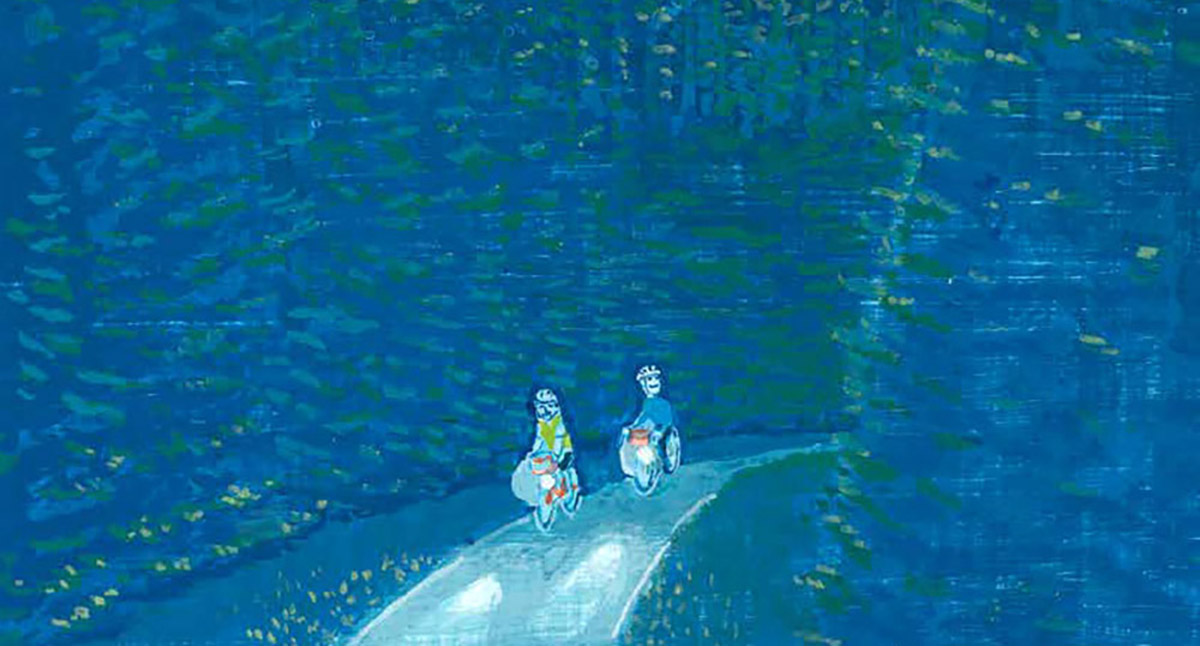Let’s Focus on Humans, Not Things
The latest U.N. Climate Talks concluded this weekend. There was some encouraging progress, but not nearly enough. Yet bike companies and social media has been mostly silent on what is probably the most urgent problem humanity faces. It’s almost as if we don’t want to talk about what many perceive as an ‘inconvenient truth’ – that we may need to change how we live our lives if we want to keep this planet habitable for humans. Deep down, we have a feeling that simply replacing heavy gasoline-powered SUVs with even heavier electric ones can’t be the entire solution. Nobody seems to have calculated whether all that electricity can be generated sustainably… And then there is the issue of manufacturing all those new cars, batteries, etc.
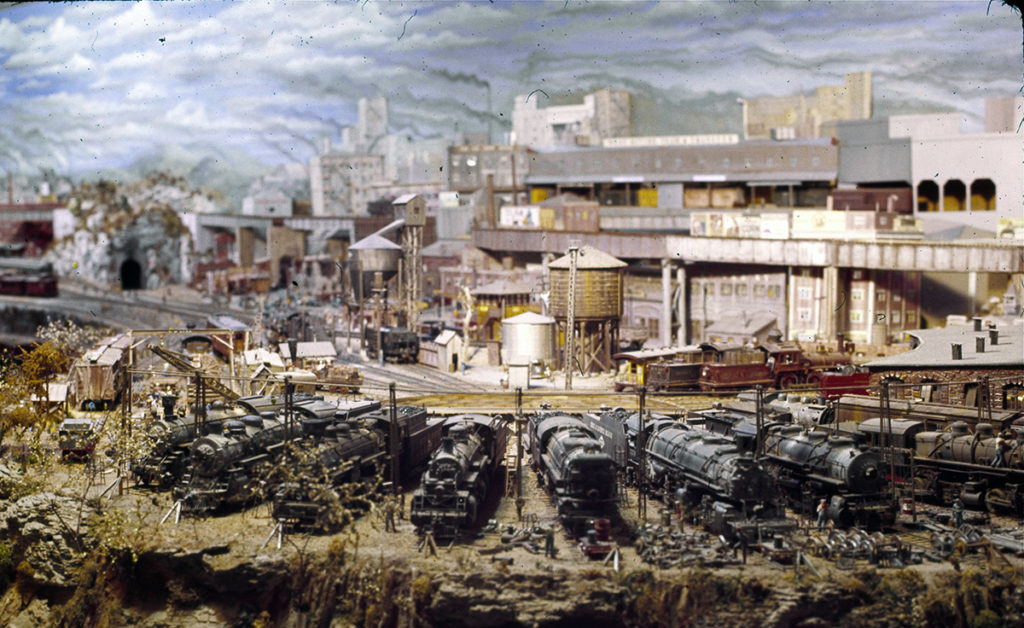
Manufacturing is a big issue that we don’t often talk about. Making stuff is responsible for 30% of all carbon emissions. That’s roughly the same as the emissions caused by transportation – all our cars, trucks, ships and airplanes combined. The obvious solution is not just ‘drive/fly less’ but also ‘buy less.’ (Now I understand why few companies want to talk about this…)
Here’s a thought: What if we change the focus from things to humans as part of our solution to climate change? What if we emphasize the quality of the things we consume, rather than their quantity? And focus on the quality of life they bring us and to the people who make them?
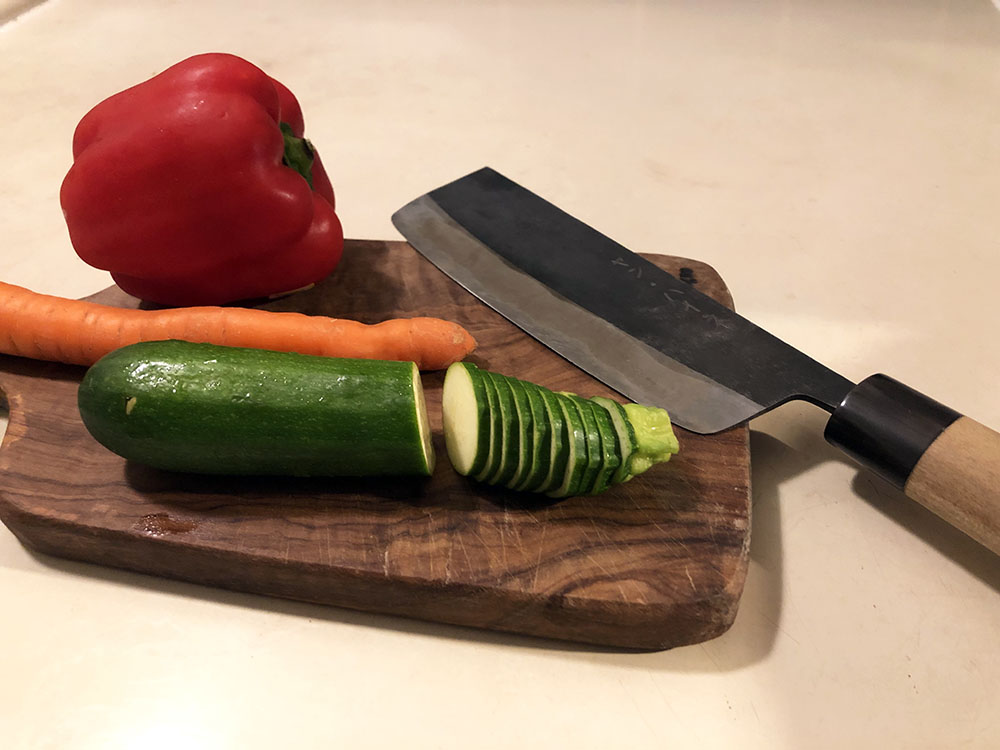
Buying less may not sound like much fun, until we really think about it. If we buy fewer things, we have a larger budget for each item. That’s a fundamental shift, from ‘more’ to ‘better.’
We can only use one thing at a time… When we are out on a ride, what matters is how good the bike is that we are riding right now – not how many bikes we have in our garage. When we are cooking, we’ll get joy from using a great knife, not from having a kitchen drawer stocked with dozens of knives. Choosing wisely, we won’t need a multitude of things. One good all-road bike can do most of the riding we do. Two or three great knives can do all the cutting when we’re cooking.
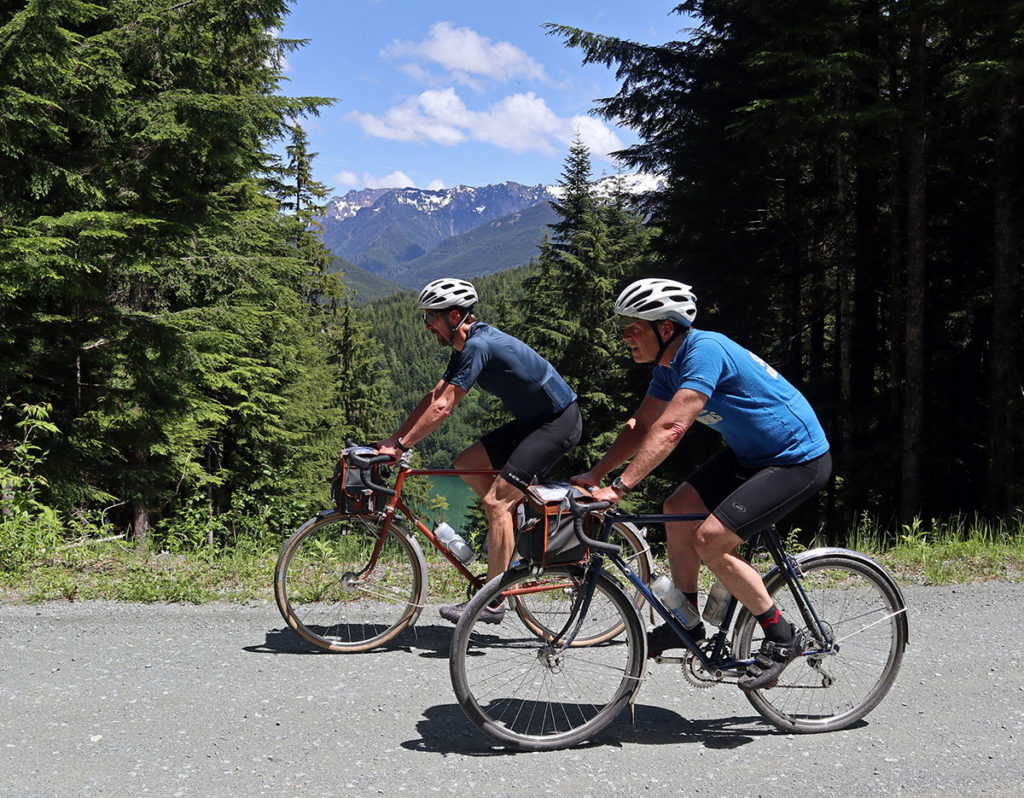
And since high-quality products last longer, buying well-made things also means buying less over time – at which point we’re not just reducing our impact, but also saving money. Every seasoned mechanic will tell us that “nothing is more expensive than cheap tools.” In other words, buying good tools costs less in the long run. The same applies to bicycles, knives…
BQ test rider Mark is a good example: His 6-Hands bike (furthest from camera in the photo above) is the last bike he’s bought – 15 years ago. It’s the bike he rides all the time. He rides it well and enjoys it greatly. And even though it was expensive when he bought it, the money he has spent per year and per mile has turned out to be comparatively little.
Steve (front) went one step further. He rebuilt a 1980s Trek into a 650B randonneur bike – his famous Frek. He combined second-hand parts for components that don’t wear out – like stem, seatpost, etc. – with high-quality new ones where it matters, to create a bike that rides well and gives him great joy.
Here at Rene Herse Cycles, our goal is to make components for riders like Mark and Steve – who enjoy their bikes to the max and who are looking for timeless performance and quality. We’re committed to supporting our products in the long term – Mark and Steve will be able to get chainrings for the Rene Herse cranks of their bikes as long as we’re in business… We might sell more crankarms if we changed the bolt pattern under the pretense of ‘innovation,’ but that’s not how we do things.
We also make our tires with a little more rubber in the middle of the tread, so they last more than twice as long. This doesn’t affect their suppleness and adds only a few grams of weight, so it doesn’t reduce their performance. (Thanks to the high-end materials, our tires are still lighter than most.) These are small things, but we believe that they don’t just reduce our impact, but also increase the enjoyment our customers get from our parts.
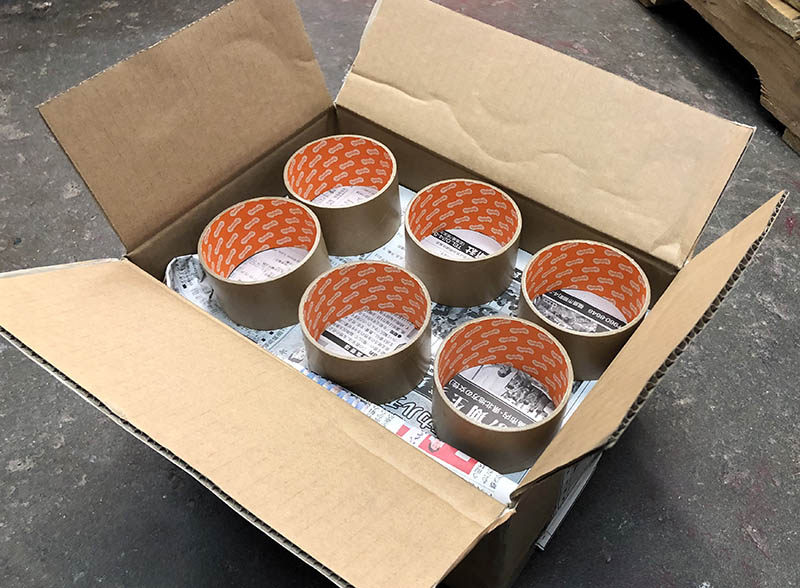
We are also taking more ‘conventional’ measures to reduce our impact. Over the years, we’ve reduced our carbon footprint in many ways. Some things are small, like turning down the temperature in our warehouse and encouraging our employees to ride their bikes to work.
Others are bigger than they may appear at first, like using a multitude of box sizes. Each order is shipped in a box that is just the right size, so there is very little empty space that needs to be filled with packaging. Reducing the box sizes also means less fuel is used during shipping – and that has the added benefit that you pay less for shipping. We source our boxes locally, rather than from the biggest supplier, Uline, which uses its profits to promote an anti-environmental agenda. When I get packages from big retailers, I find that many use only a few relatively large box sizes. Often there is more packaging than product inside.
At Rene Herse Cycles, we also reuse boxes, not just the boxes that our suppliers use for shipping products to us, but also boxes that we get with our personal purchases. That’s why you may get your order from Rene Herse Cycles in a box with an unfamiliar logo. Combined, using ‘just-right-size’ boxes and reusing boxes has reduced our packaging needs by more than 70%. It’s allowed us to almost completely phase out the use of bubble wrap and other hard-to-recycle packaging. We are grateful to our employees who enjoy the challenge of finding the most efficient box for each order. They are really good at it!
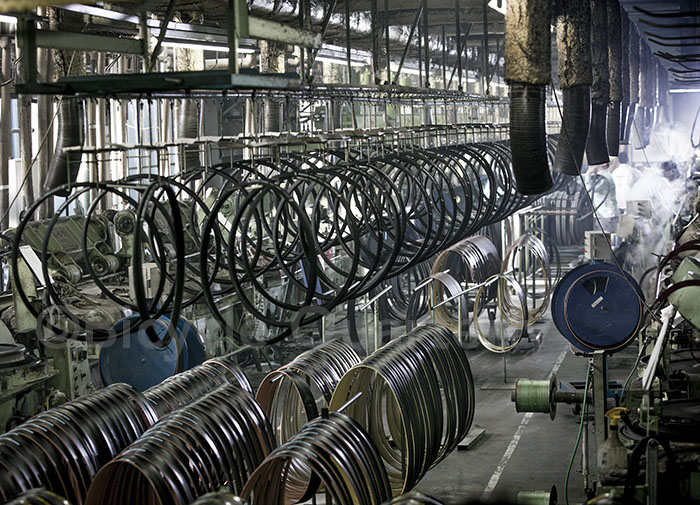
We also work with suppliers who take pride in the skill and quality of their work. This means less waste, because there are fewer rejects. That’s a big issue that often gets overlooked: In today’s world, it’s often cheaper to throw out entire production runs than to hire skilled workers who stop the machines immediately if something isn’t right. I’ve been to factories where the reject bins were huge and overflowing…
Well-run, clean factories also mean that partially finished products don’t need to be wrapped in plastic to keep them from getting dirty. It may look ‘eco’ to hang a tire on the shop wall without any plastic packaging, but this is negated if that tire has been wrapped in plastic again and again at every step of manufacturing and shipping. We’d rather use plastic once – for the finished product, to protect the tires from premature aging. In the future, we hope to find a better solution that equally protects your tires, but eliminates the only piece of plastic in our production process. For small parts, we use plastic bags that were surplus and would otherwise have been thrown away. This way, they get used at least once…
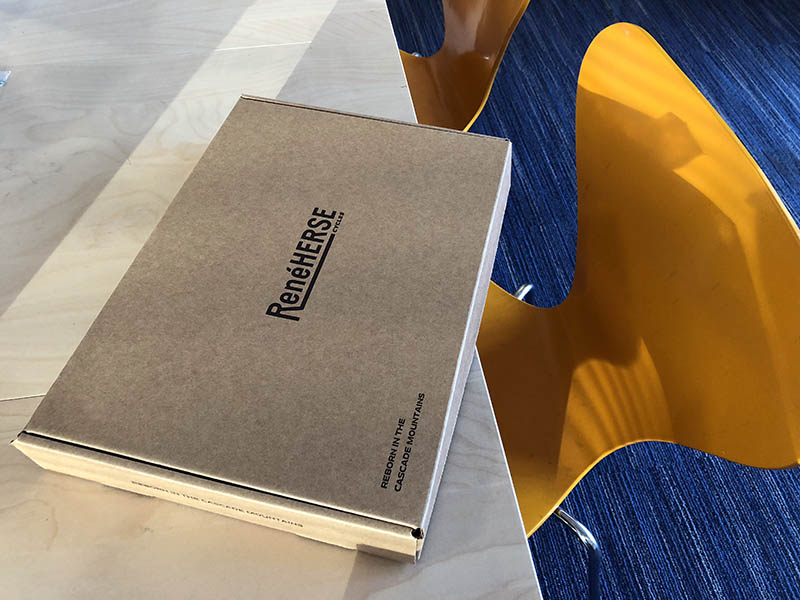
All our packaging also balances the need for protection with our desire to reduce our environmental impact. Our cranks have always have been packaged in cardboard boxes with custom-made inserts that keep the parts from moving and scratching each other. The boxes use fewer resources than vacuum-formed plastics. They are also nicer to handle when you get your new crank.
Speaking of manufacturing less, Natsuko bought the iconic ‘7 Chairs’ for our meeting table (above) at an antique shop. They may have a little patina, but their timeless design and high quality bring us joy every day.
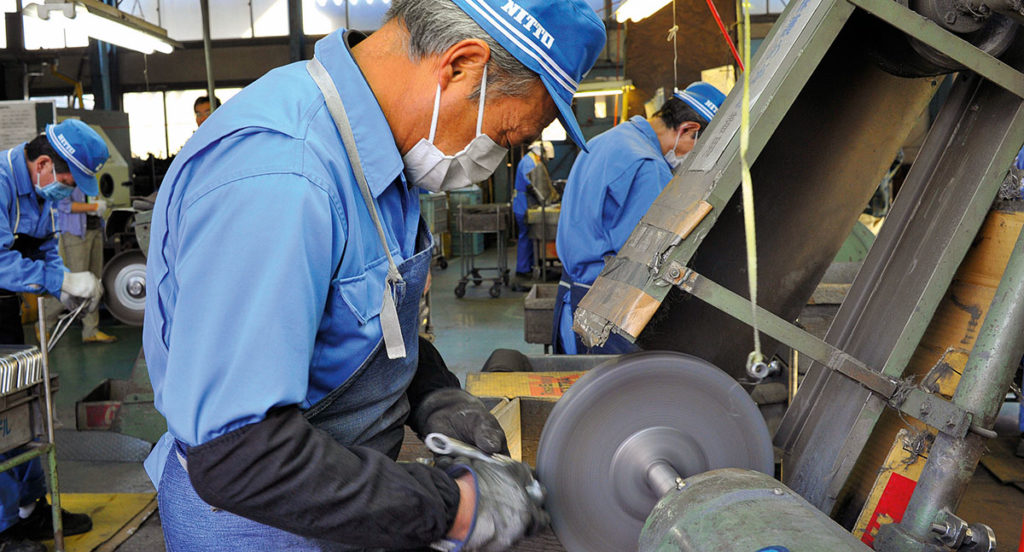
The quality = better life also works at the manufacturing end: Making top-quality products requires skilled workers, who get paid more and derive more satisfaction from their jobs. Focusing on people rather than things has wide-ranging benefits. The biggest one is a better quality of life and more fun for everybody: the people who make our components; the mechanics who install them, and the cyclists who enjoy them on the road.
Of course, we are also well aware that individual action alone cannot solve our problems. We also need to change the rules so that the real costs of emissions are not borne by society, but paid for by those who cause the pollution. That’s something we can get behind much more easily when we realize that addressing this issue won’t reduce our quality of life, but actually increase it.


